Did you know that Adiantum raddianum, commonly known as the Maidenhair Fern, is a stunning house plant known for its delicate, apple-green leaves? This elegant fern adds a touch of sophistication to any indoor space. However, caring for Adiantum raddianum requires replicating its tropical habitat, making it a bit finicky. But fear not, I’m here to guide you through the essential care tips for this beautiful plant.
Appearance of Adiantum raddianum (Maidenhair Fern)
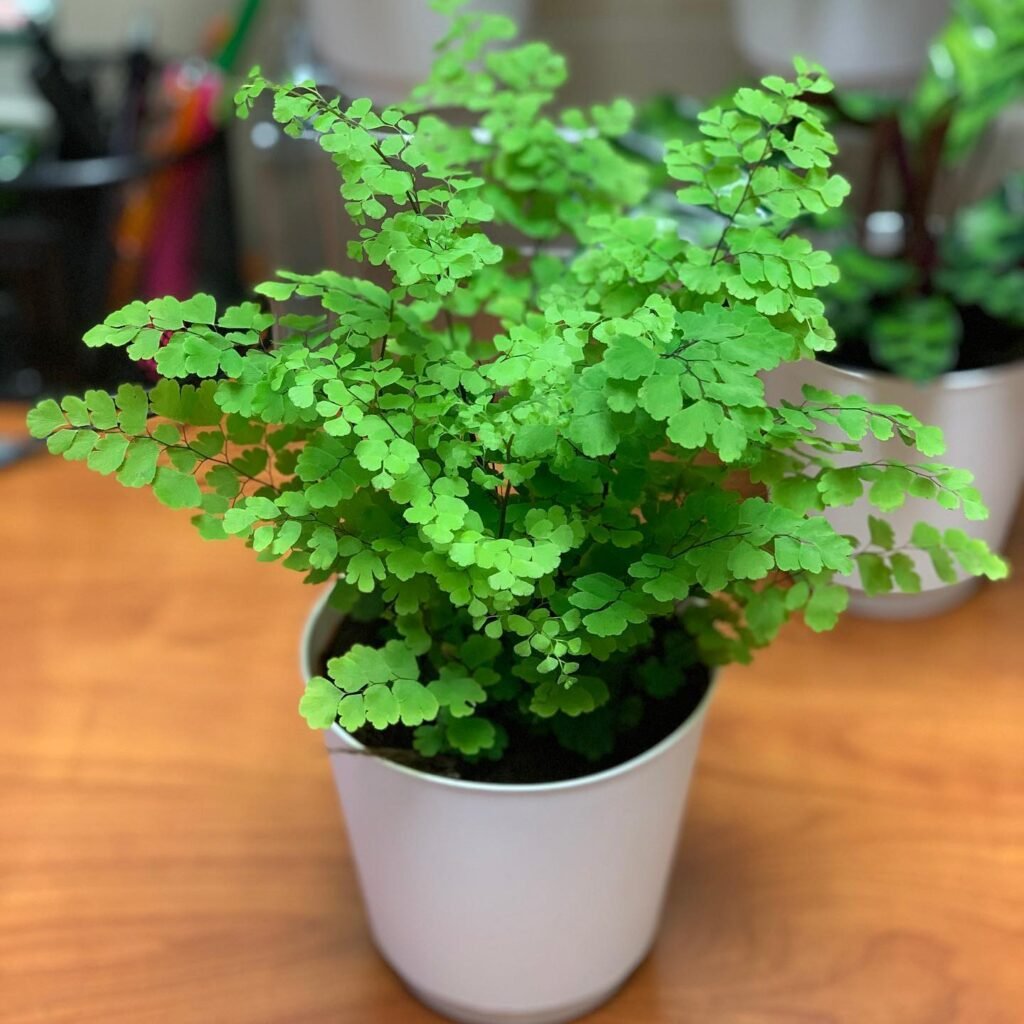
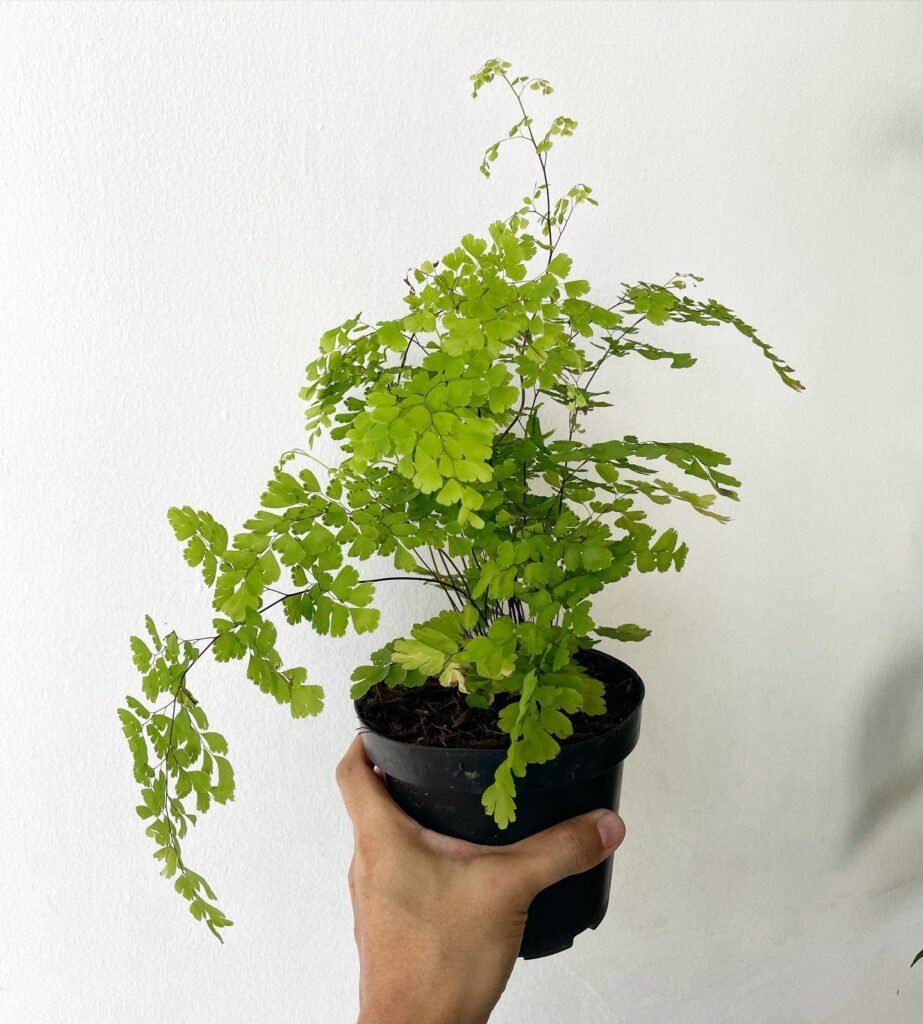
The Adiantum raddianum, known as the Maidenhair Fern, is notable for its unique appearance, which is quite distinct from that of other ferns. This plant features thin, black or dark brown stems that hold up its light, airy fronds. The fronds are made up of small, rounded or fan-shaped leaflets, arranged in a pattern that somewhat resembles a ladder when viewed up close.
The color of the leaflets is a bright, vibrant green, providing a striking contrast against the dark stems. This contrast is one of the Maidenhair Fern’s most visually appealing characteristics. The fern’s overall structure is delicate, with the fine texture of the leaflets giving it a soft appearance.
Despite its delicate looks, the Maidenhair Fern is quite resilient when provided with the right conditions. Its fronds, although thin, are capable of a graceful movement in the breeze, adding a dynamic element to its appearance.
In summary, the Maidenhair Fern is recognized for its delicate, airy fronds with small, fan-shaped leaflets and contrasting dark stems. Its vibrant green color and unique structure make it a popular choice for adding a touch of natural elegance to indoor spaces.
 Did you know? The Maidenhair Fern, has been historically used in medicine. This plant was once utilised to treat a variety of ailments, from coughs and colds to hair loss. Its use in traditional remedies underscores not just its beauty, but also its potential benefits beyond the garden.
Did you know? The Maidenhair Fern, has been historically used in medicine. This plant was once utilised to treat a variety of ailments, from coughs and colds to hair loss. Its use in traditional remedies underscores not just its beauty, but also its potential benefits beyond the garden.
Light Requirements for Adiantum raddianum
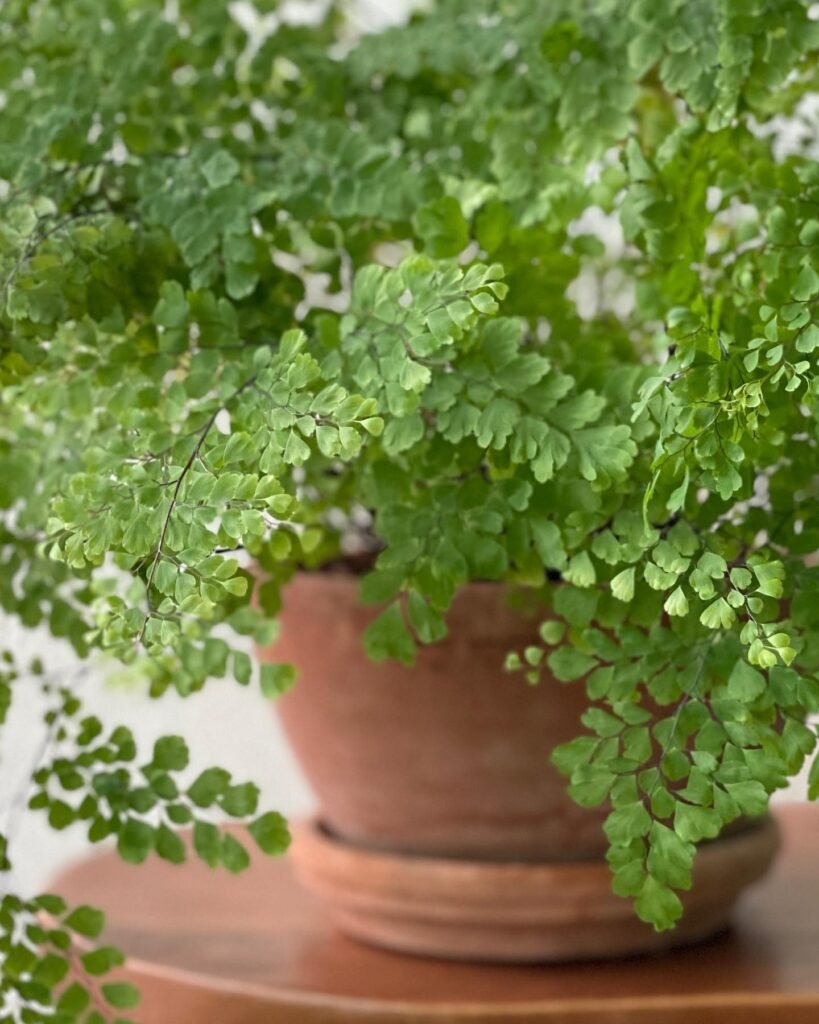

When it comes to caring for your Adiantum raddianum, providing the right light conditions is crucial for its health and growth. This beautiful Maidenhair Fern thrives in bright, indirect light. It loves to bask in the filtered sunlight that seeps through a curtained window or the gentle glow of a well-lit room.
If you plan to grow your Maidenhair Fern indoors, make sure to place it near a window where it can receive plenty of natural light. Avoid placing it in direct sunlight, as the strong rays can scorch and damage its delicate leaves. Instead, opt for a spot that offers bright, indirect light throughout the day.
Pro Tip: If you notice your Maidenhair Fern’s leaves turning pale or yellowish, it may be an indication that it’s receiving too much light. Move it to a slightly shadier location to see if its condition improves.
If you’re considering growing your Maidenhair Fern outdoors, choose a shaded area where it won’t be exposed to direct sunlight. Plant it under the canopy of larger trees or in a north-facing garden bed where it can enjoy the dappled shade. This will protect its delicate fronds from the intense afternoon sun and prevent them from drying out or scorching.

Watering Tips for Adiantum raddianum (Maidenhair Fern)

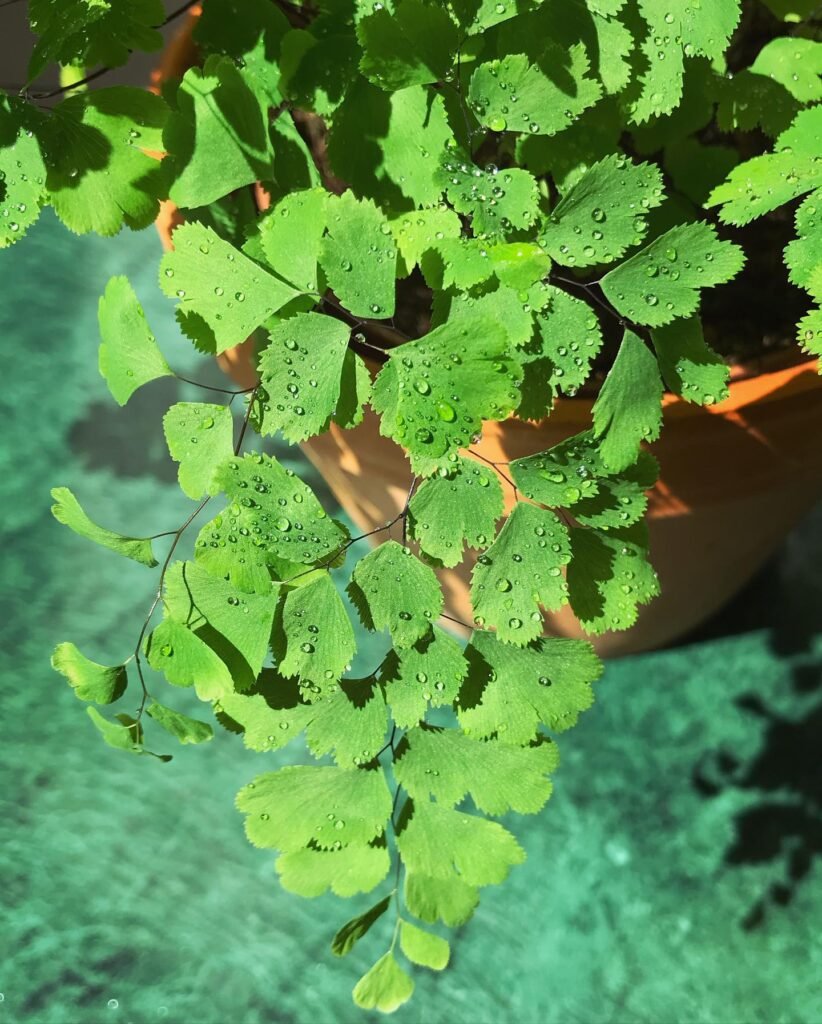
Adequate watering is essential for the health of Adiantum raddianum. This fern requires consistently moist soil, but it should not be waterlogged.
- Water the plant when the top inch of soil feels dry to the touch.
- Avoid letting the soil dry out completely or become soggy.
It’s also important to maintain high humidity levels around the fern. Misting the leaves regularly or placing a dish of water nearby can help create a humid environment that mimics its natural habitat.

Fertilizing and Soil for Adiantum raddianum
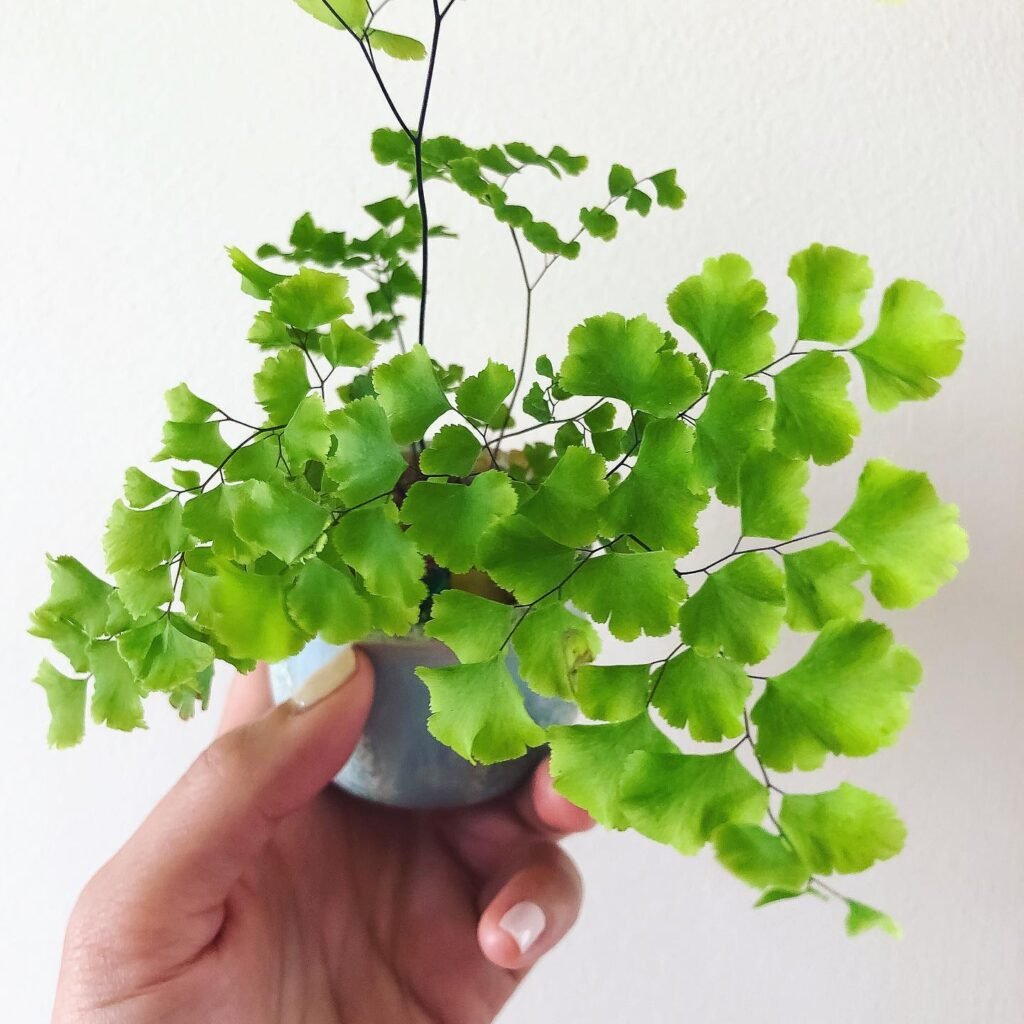

To keep your Maidenhair Fern thriving, it’s important to fertilize it regularly, especially during the spring and summer months. I recommend using a balanced liquid fertilizer diluted to half strength. This will provide the necessary nutrients without overwhelming the plant.
Apply the fertilizer according to the package instructions, ensuring even distribution across the soil surface. I find it helpful to use a watering can with a fine rose attachment to avoid disturbing the delicate foliage.
Choosing the Right Soil
Adiantum raddianum prefers a well-draining potting mix that retains moisture while allowing excess water to drain away. When selecting a soil for your Maidenhair Fern, opt for a peat-free, multi-purpose compost to promote healthy growth.
Avoid using heavy or compacted soil, as it can lead to root rot and hinder the fern’s overall health. The ideal soil should be loose and airy, providing ample oxygen to the roots.
Soil Moisture and Drainage
Maintaining the appropriate moisture level in the soil is essential for Maidenhair Fern care. Adiantum raddianum prefers consistently moist soil but should never be waterlogged.
Monitor the moisture level by checking the top inch of soil. If it feels dry to the touch, it’s time to water the plant. On the other hand, if the soil feels soggy, allow it to dry out slightly before watering again.
Remember to always use room temperature water when irrigating your fern. This will help prevent shock to the roots and maintain a comfortable environment for Adiantum raddianum.
The Importance of Drainage
Proper drainage is crucial to prevent waterlogged soil and root rot in Maidenhair Fern. Ensure that the pot you choose has drainage holes to allow excess water to escape. If your favorite decorative container doesn’t have drainage holes, consider using a plastic inner pot with drainage and placing it inside the decorative pot.
- Choose a balanced liquid fertilizer diluted to half strength.
- Apply fertilizer once a month during spring and summer.
- Select peat-free, multi-purpose compost for well-draining soil.
- Maintain consistently moist, but not waterlogged, soil.
- Check soil moisture by feeling the top inch of soil.
- Ensure your pot has proper drainage to prevent root rot.

Pruning and Maintenance for Maidenhair Fern
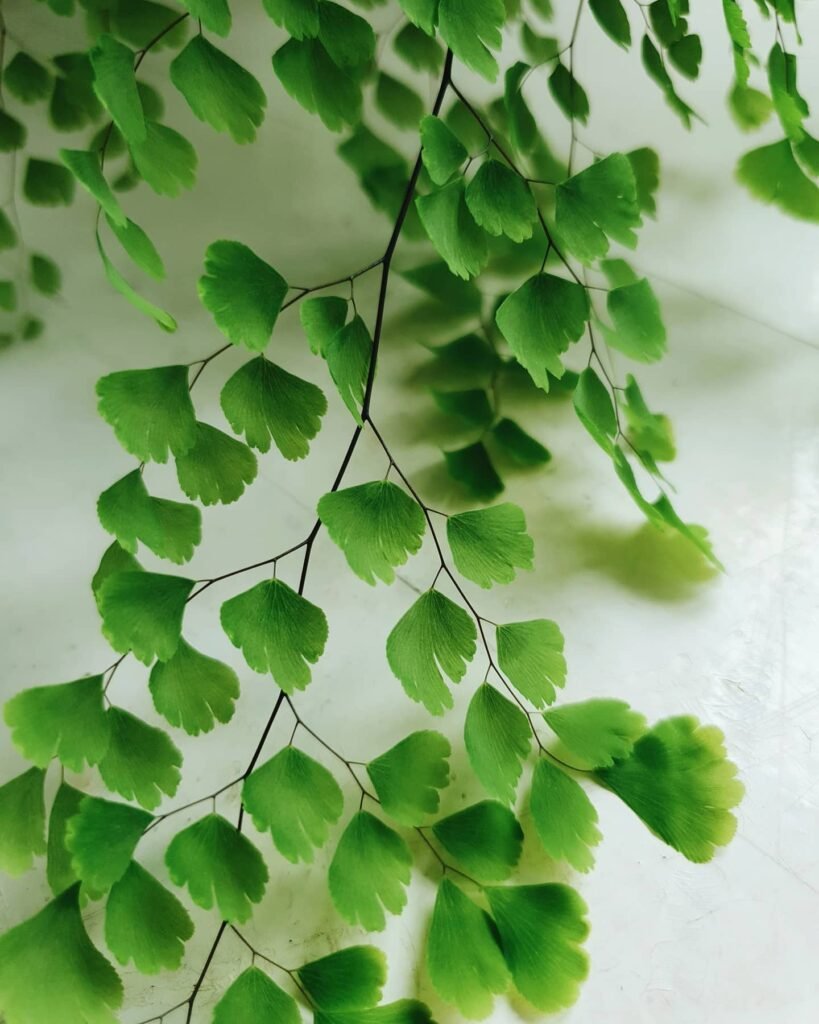

Pruning plays a crucial role in keeping your Adiantum raddianum healthy and looking its best. To promote new growth, it’s important to remove any dead or yellowed fronds. Trim back stems that have become too long or leggy to maintain a compact and attractive appearance.
Regularly inspect your maidenhair fern for pests and signs of diseases. Swift action is essential if you notice any issues to prevent further damage. Treat any infestations or infections promptly and effectively to safeguard the health of your fern.
Maintaining the right humidity levels is also important for the well-being of your Adiantum raddianum. Monitor the moisture in the air and make necessary adjustments to create an environment that mimics the fern’s natural tropical habitat. This will ensure optimal growth and overall health for your maidenhair fern.
- Remove dead or yellowed fronds
- Trim back long or leggy stems
- Regularly check for pests and diseases
- Take immediate action if any issues are found
- Monitor and adjust humidity levels as needed

Propagating Adiantum raddianum (Maidenhair Fern)
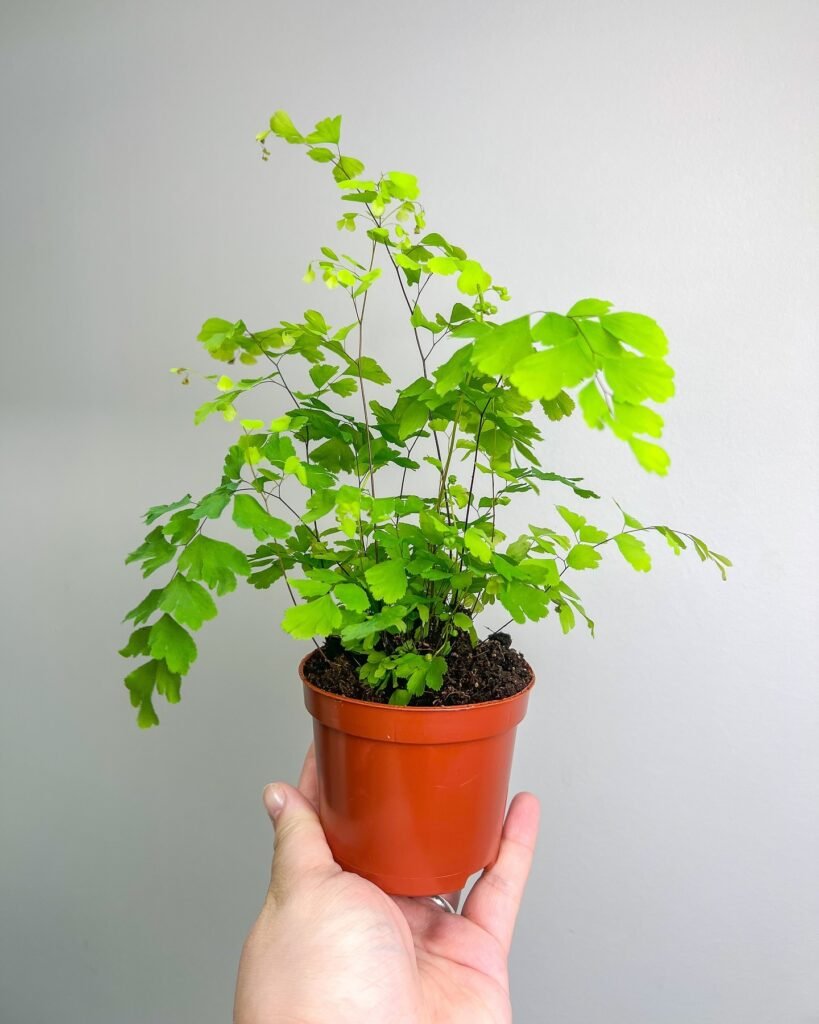
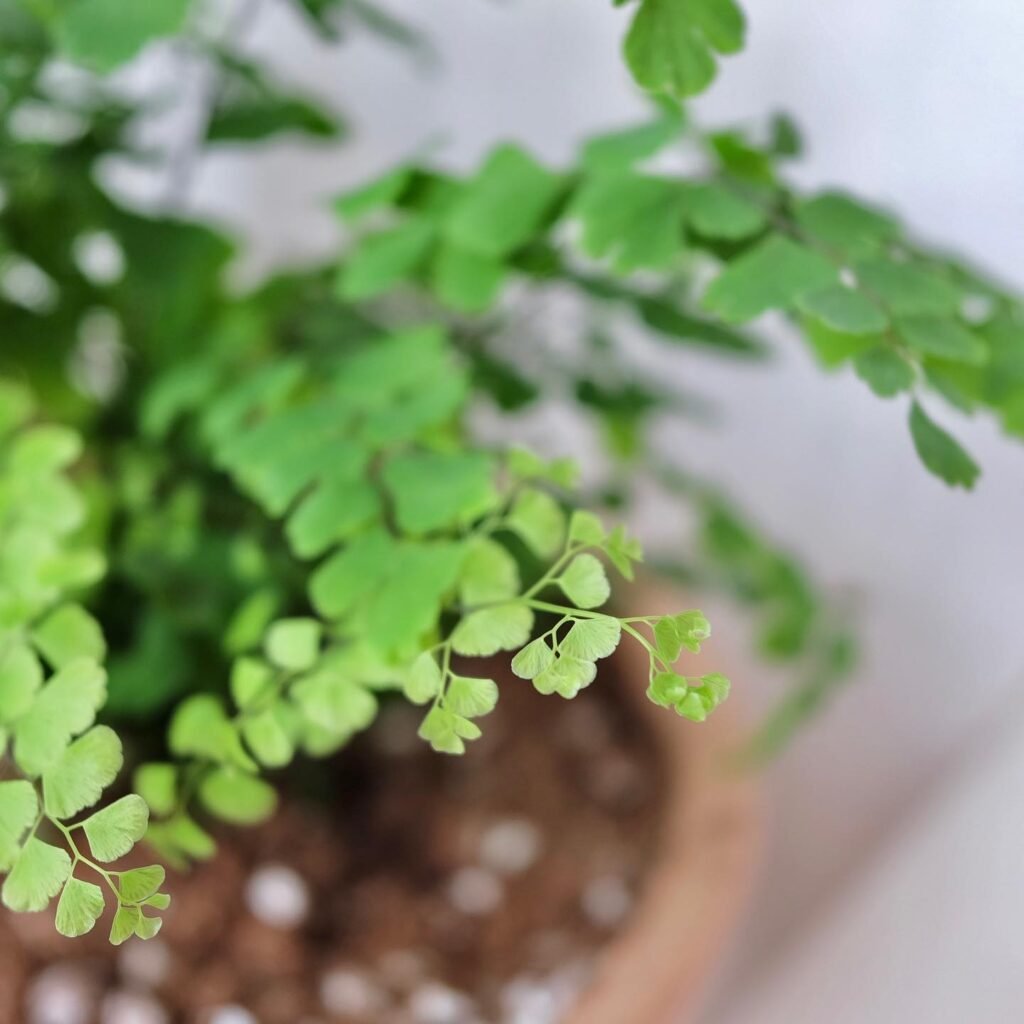
Propagating Adiantum raddianum, also known as Maidenhair Fern, is an exciting way to expand your collection and share the beauty of this delicate plant with others. One of the simplest methods of propagation is through division when repotting the fern.
To propagate Adiantum raddianum, gently separate the rhizomes into smaller sections, ensuring that each section has adequate roots and foliage. It’s important to be gentle to avoid damaging the delicate rhizomes.
Once you have separated the sections, plant them in their own containers. Choose pots that provide enough space for the roots to grow and thrive.
After planting, provide the new plants with a warm, humid environment similar to that of the established fern. This will help them acclimate and encourage healthy growth. Consistency is key in caring for the new propagations, so be sure to provide them with the same level of care, including proper watering, light, and humidity.
It’s important to note that propagating Adiantum raddianum through division may require some patience. It may take some time for the new plants to develop and grow into mature maidenhair ferns. However, with proper care and attention, you’ll soon have a thriving collection of these elegant plants.

Repotting Tips for Adiantum raddianum
When it comes to caring for your Adiantum raddianum, repotting is an important task that ensures the plant’s growth and health. Repotting should be done every year or two, especially when the root ball has filled the pot and the plant needs more space to thrive.
Here are some essential tips for repotting your Adiantum raddianum:
- Choose the right pot: Select a pot that is slightly larger than the current one, allowing room for the fern’s roots to spread. Ensure that the new pot has drainage holes to prevent waterlogged soil.
- Use well-draining potting mix: Adiantum raddianum prefers a moist but well-draining environment. Use a high-quality potting mix that is specifically formulated for ferns or a mixture of peat moss, perlite, and compost.
- Position the plant correctly: When transferring the fern to the new pot, make sure it sits at the same depth as before. Avoid burying the crown (where the fronds emerge) too deep, as this can lead to rot.
- Water thoroughly after repotting: After repotting, give the plant a thorough watering to help settle the soil and remove any air pockets around the roots. Ensure that excess water drains out of the pot.
- Provide a warm, humid environment: To help the fern adjust to its new container, keep it in a warm and humid location. This mimics its natural tropical habitat and promotes healthy growth.
 Ever heard? The Maidenhair Fern is a NASA-approved air purifier. This dainty plant is not just visually appealing but also a whiz at freshening up your indoor air, straight from space research to your living room!
Ever heard? The Maidenhair Fern is a NASA-approved air purifier. This dainty plant is not just visually appealing but also a whiz at freshening up your indoor air, straight from space research to your living room!
Varieties of Adiantum raddianum (Maidenhair Fern)
The Maidenhair Fern is a beloved choice among indoor gardening enthusiasts, thanks to its diverse and visually stunning varieties. Each type of Maidenhair Fern brings a unique aesthetic to your home, from the refined shapes of their foliage to the striking colors of their stems.
Delta Maidenhair Fern: This variant stands out with its elegant, arching stems in black, complemented by pale green, triangular-shaped fronds. Its refined appearance brings a sophisticated flair to any interior space.
Himalayan Maidenhair Fern: Featuring striking black stems paired with bright lime-green foliage that matures to a deeper green, this variety offers a lively, eye-catching presence in any room.
Southern Maidenhair Fern: Ideal for creating a gentle, serene ambiance, this variety boasts delicate, light green fronds, perfect for softening your indoor garden’s look.
Northern Maidenhair Fern: With its dark stems and lush green leaves, this type adds a refreshing splash of greenery, invigorating your living space with natural vibrancy.
Rosy Maidenhair Fern: Distinguished by its unique reddish-pink stems and light green leaves, the Rosy Maidenhair Fern introduces a subtle yet charming burst of color, infusing your plant collection with a feminine touch.
Faux Maidenhair Fern: For enthusiasts who admire the Maidenhair Fern’s beauty but prefer minimal upkeep, the faux variant offers a maintenance-free alternative that still captures the plant’s lifelike charm.
These Maidenhair Fern varieties offer something for every preference and decor style, from the classical elegance of the Delta to the Rosy’s playful hues. Regardless of your choice, these ferns promise to elevate your home’s aesthetic with their distinctive beauty.
Helpful Videos about Adiantum raddianum (Maidenhair Fern)
Have a look at these fantastic videos I stumbled upon, focused on caring for the Adiantum raddianum, or Maidenhair Fern, as it’s commonly known. They’re packed with easy-to-follow advice that simplifies the art of nurturing this plant. Perfect for beginners looking to start their gardening adventure!
- Adiantum raddianum (Maidenhair Fern) Houseplant Care
- Watch THIS…Before You Buy a Maidenhair Fern (Adiantum raddianum)
- How to Keep Your Maidenhair Fern Alive – Maidenhair Fern Care Guide
FAQ about Adiantum raddianum (Maidenhair Fern)

Wondering about the best ways to care for your Adiantum raddianum, or Maidenhair Fern? You’ve come to the perfect spot! I’ve gathered all the essential queries to help you nurture your plant with ease. From mastering the ideal watering routine to addressing common concerns, you’re in capable hands.
Maidenhair Fern thrives in bright, indirect light. Avoid direct sunlight, as it can scorch the delicate fronds. A north-facing window is ideal in the UK.
Keep the soil consistently moist but not waterlogged. Water your fern when the top inch of soil feels dry to the touch. In the UK climate, this may mean watering once or twice a week, depending on the season.
This fern prefers a cooler temperature, ideally between 16°C to 21°C. Protect it from sudden temperature changes and cold drafts.
Yes, Adiantum raddianum loves high humidity. Regular misting, a pebble tray with water, or a humidifier can help maintain the humidity levels it craves, especially important in the drier, central-heated homes common in the UK.
Fertilise your Maidenhair Fern with a balanced, water-soluble fertiliser at half strength, once a month during the growing season (spring and summer).
Use a light, airy potting mix that drains well. A mix containing peat moss or coco coir, perlite, and vermiculite works well for Adiantum raddianum.
Repot in the spring, choosing a pot only slightly larger than the current one. Be gentle with the roots and ensure the pot has good drainage.
Yes, but it’s best in a sheltered, shady spot. Ensure the outdoor environment mimics its preferred indoor conditions, especially concerning light and moisture.
Brown leaves can be a sign of too much direct sunlight, low humidity, or under-watering. Adjust care accordingly to combat these issues.
Yellow leaves often indicate over-watering or poor drainage. Ensure your potting mix is well-draining and you’re not leaving the plant in standing water.
Maidenhair Ferns can attract pests like spider mites. Increase humidity to deter them and use a gentle, natural insecticide or neem oil spray to treat infestations.
Yes, prune any brown or dead fronds at the base to encourage healthy growth and improve appearance.
Slow growth can be due to insufficient light, low humidity, or the need for fertilisation. Address these factors to encourage growth.
Propagate by division during repotting. Gently separate the plant into smaller sections, ensuring each has roots, and pot them separately.
Yes, Adiantum raddianum is non-toxic and safe for cats and dogs.
Besides misting and pebble trays, placing your fern in a well-lit bathroom can naturally increase humidity around the plant.
Gently dust the fronds with a soft brush or blow lightly with a hairdryer on a cool setting to avoid damaging them.
It’s normal for older fronds to die off as part of the plant’s natural growth cycle, especially when new growth appears. Regularly prune dead or yellowing fronds to keep your fern looking its best.
Yes, Adiantum raddianum is an excellent choice for terrariums due to its love for high humidity and indirect light. Just ensure the terrarium is not placed in direct sunlight to avoid overheating.
I hope this FAQ has shed some light on the nurturing of your Adiantum raddianum, or Maidenhair Fern. If there are more queries bubbling up, don’t hesitate to pop them in the comments. I’m at your service. Bear in mind, we all embark as novices in the gardening world, and there’s continually something fresh to discover as you flourish alongside your verdant friend.

